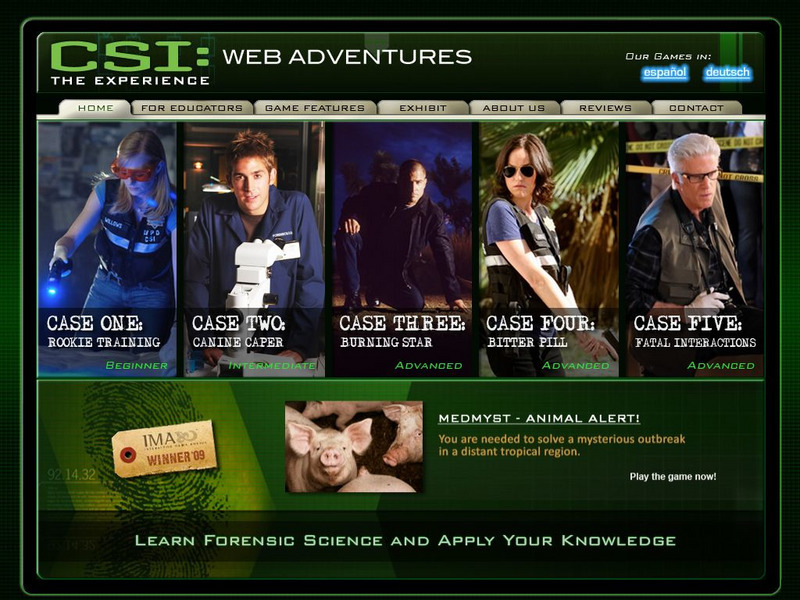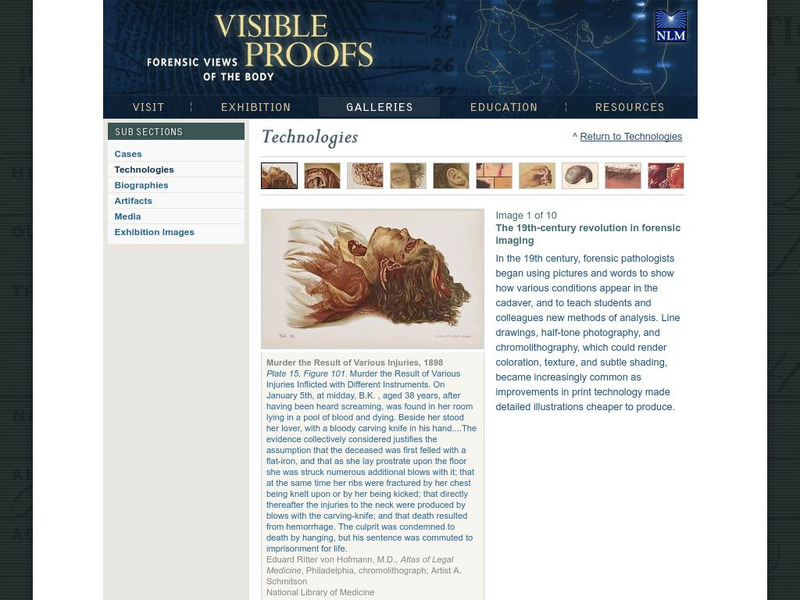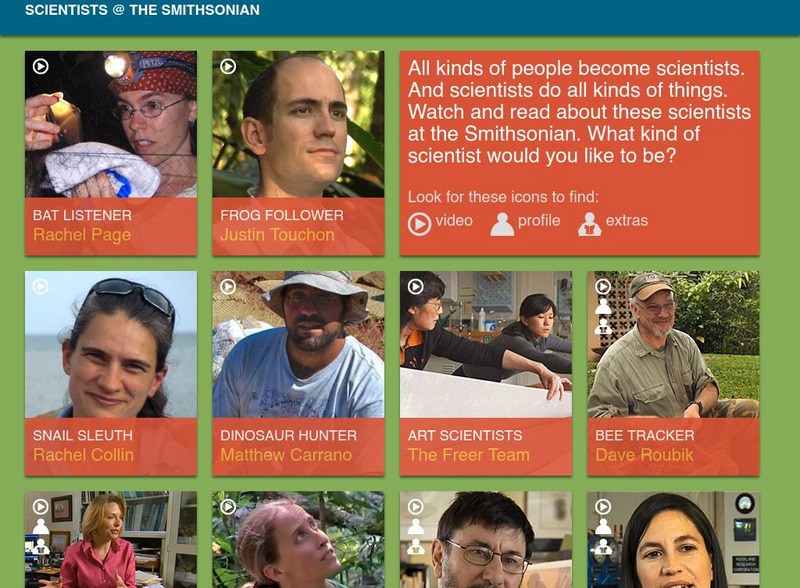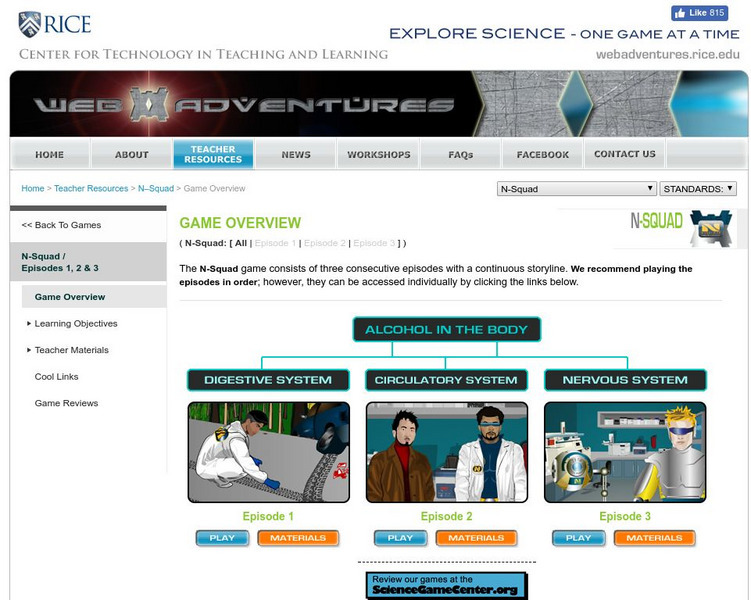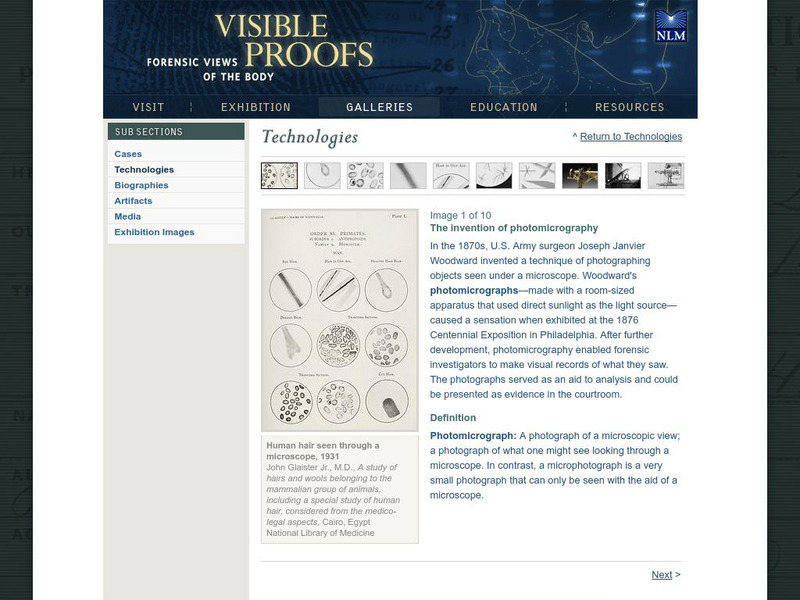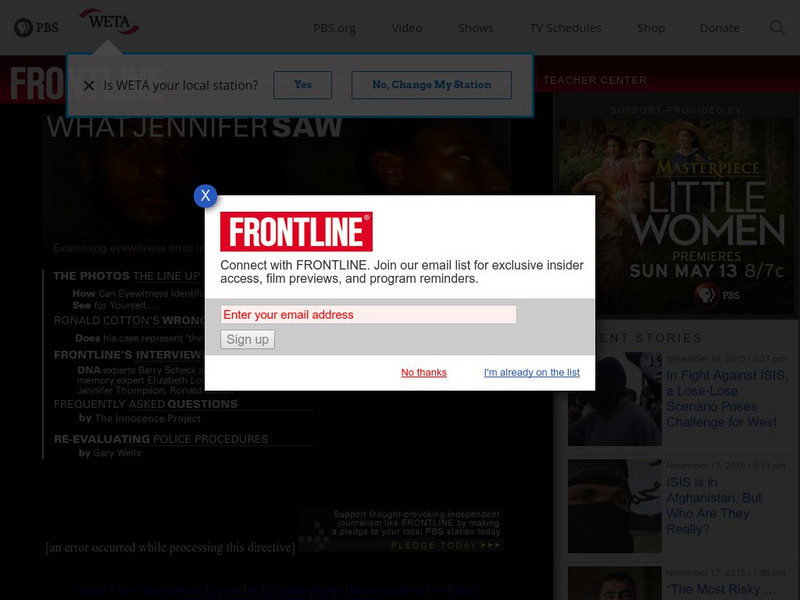Read Works
Read Works: Focus on Scientists
[Free Registration/Login Required] An informational text about different types of scientists including: an inventor, a forensic scientist, an astronomer, a primatologist, and more. A question sheet is available to help students build...
Georgia Department of Education
Ga Virtual Learning: Forensic Science
In this comprehensive learning tutorial you will be provided with a brief introduction to Forensic Science and the history of Forensic Science. You will explain the different specialty areas of a forensic laboratory and discuss the...
Natural History Museum
Natural History Museum: On Maggots and Murders: Forensic Entomology [Pdf]
Five-page article explains how forensic scientists, when investigating crimes, analyze maggots and blowflies to determine approximate times of death.
Virtual Museum of Canada
Virtual Museum of Canada: Virtual Exhibit on Forensic Science
Discover the components of forensic science. There is also a link to a simulation in which you can apply your skills to solve a crime.
Rice University
Rice University: Web Adventures: Csi: The Experience
Based on the CSI television show, this series of four role-playing games helps students learn the scientific method and try their hand at solving crimes. Discover if you have what it takes to be a forensic scientist.
TED Talks
Ted: Ted Ed: Early Forensics and Crime Solving Chemists
In a CSI age, we take forensic science for granted. New York did not have a medical examiner or forensic toxicologist until 1918, whose eventual arrival changed the landscape of crime investigation forever. Deborah Blum prompts the TED...
National Institutes of Health
National Library of Medicine: Visible Proofs: Forensic Views of the Body
Students learn about the history of forensic medicine. Learners examine significant cases, technologies, and people that have had an influence on the history of forensic medicine. Educational activities are also included.
National Institutes of Health
National Library of Medicine: The 19th Century Revolution in Forensic Imaging
In the 19th century, forensic pathologists began to use words and pictures to describe cadavers and to teach using cadavers in the classroom. See a number of interesting photos of various crime scenes on this interesting site.
Smithsonian Institution
Smithsonian Institution: Scientists at the Smithsonian
This is a collection of video interviews with twenty Smithsonian scientists who work in a scientific areas as vastly different as measuring the moon and figuring out what kinds of birds collide with aircraft. An interesting way to...
Khan Academy
Khan Academy: Meet Jared Roop
Meet Jared Roop, forensics/analytical chemist and Cardinals fan!
National Institutes of Health
National Library of Medicine: Virtopsy, the Virtual Autopsy
An interesting site that delves into how forensic scientists perform minimally invasive autopsies using state of the art technology.
Indiana University
A Crime Against Plants
Have your students delve into the evidence involving a small tree and arrive at an explanation of what happened in this thorough lesson plan site. .
Rice University
Rice University: Web Adventures: N Squad: Alcohol in the Body
Online interactive game consists of three consecutive episodes. The storyline addresses three different body systems and their functions while teaching about alcohol's interaction with each of them, misconceptions about alcohol, medical...
National Institutes of Health
National Library of Medicine: Spectral Detection
This concise site provides a brief discussion of the invention of the first work spectroscopes and their impact on forensic science.
National Institutes of Health
National Library of Medicine: Reading Gunshot Patterns
Various pictures of parts of the human anatomy showing gun shot trauma are found on this interesting site. .
National Institutes of Health
National Library of Medicine: The Bertillon System
Bertillon devised a system to make order out of the myriad of crime scene photos taken by the police. This brief site describes how that system worked and shows a number of crime scene photos taken from Bertillon's photo album.
National Institutes of Health
National Library of Medicine: Key Accomplishments, Dna
A brief history of the major discoveries related to DNA from 1865 until 1991. Pictures of the responsible reponsibile for these key accomplishments are included as well.
National Institutes of Health
National Library of Medicine: Entomology in Action
Two lesson plans are found in this site. Lesson Plan 1 is geared to grades 6-9. In this plan, student's will be able to list the different stages of the blow fly's life cycle and understand how the life cycle and ADH (accumulated degree...
National Institutes of Health
National Library of Medicine: Dna a Molecular Identity
In this lesson plan site, students learn about DNA and examine three different situations where DNA was used to solve a case.
Other
Crime Scene Investigation: Proper Tagging and Labeling of Evidence
What is the purpose of tagging and labeling items of evidence? What information belongs on the tag? These questions are answered in this concise but competent site.
National Institutes of Health
National Library of Medicine: The Invention of Photomicrography
The technique of photographing objects observed under a microscope is discussed in this succinct site. Various pictures taken under a microscope are displayed on this site as well.
PBS
Pbs: What Jennifer Saw
How can eyewitness identification go wrong? What role can DNA play in protecting the innocent? This interesting site answers these questions and gets the opinions of several DNA experts on this fascinating subject.
National Institutes of Health
National Library of Medicine: The Marsh Test
The Marsh Test, developed in 1832, was designed to detect poison in drinks. A short history of this test is provided along with photo of the test apparatus.
National Institutes of Health
National Library of Medicine: Key Accomplishments, Radiology
A history of radiology is featured from 1901 until 2003. Succinct paragraphs cover the highlights of each discvery.


![Natural History Museum: On Maggots and Murders: Forensic Entomology [Pdf] Website Natural History Museum: On Maggots and Murders: Forensic Entomology [Pdf] Website](https://d15y2dacu3jp90.cloudfront.net/images/attachment_defaults/resource/large/FPO-knovation.png)

